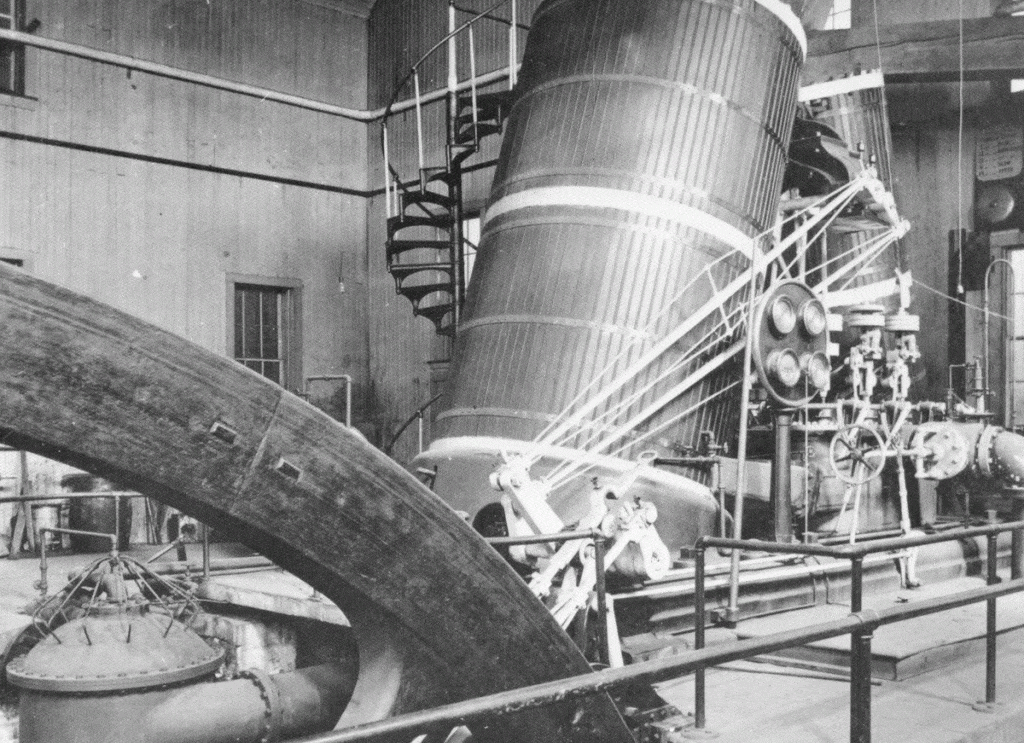Cornwall has a very long history of mining. The region is located on the southeastern peninsula of the Great Britain and has been a producer of tin for millennia.
Cornish mining dates back to at least 2000 BCE and the early Bronze Age.[1] It was during this era of human history that metal workers discovered the alloy bronze by adding small amounts of tin to molten copper. The resulting bronze is harder and stronger than copper and the subsequent demand for tin grew throughout the Mediterranean and Europe. By the Middle Ages, mining had become so important in Cornwall that in 1305 King Edward I established separate legal bodies to administer laws in the region. Cornish miners were exempt from ordinary taxation and had certain guaranteed legal rights for prospecting.[2]
In the 1600s, miners in the area developed methods for blasting rock using gunpowder, which in turn revolutionized the mining process. Days of work using axes and other hand tools were replaced with one blast.[3] Roughly a century later, the trade was again fundamentally changed when the process of digging shafts became common. By the mid-19th century, Cornish mining was at its height. By the 1840s, several schools of mining were developed. One of the most famous and well-respected, the Camborne School of Mining, still in operation, was founded in 1888.
As a result of such a long history, supported by the seriousness with which the industry was taken, Cornish miners were highly skilled, many with advanced technical skills. It was from this tradition that many Park City miners came.
In the 1860s, the world market was flooded with cheap metals from Spanish and American mines, deeply impacting the Cornish market. Mines throughout Cornwall closed and mass immigration commenced. There is a story that a visitor to Cornwall in the late 19th century asked about the miners and was told, “If you want to see Cornish miners, you must go to Pennsylvania, to Lake Superior, to Nevada, etc., you will find very few in Cornwall.”[4]
Cornish mines and those in Park City had many similarities, not the least of which was flooding. For over 100 years, Cornish miners had been employing methods to drive shafts deeper into the ground in search of copper- and tin-rich ore. The biggest mines were over 1,000 feet deep. These shafts were prone to flooding, which sometimes proved fatal. Thirty-nine miners were killed in 1846 when a sudden rain storm flooded the East Wheal mine.[5]
The famed “Cornish pump” at the Ontario Mine here in Park City was commissioned by owner George Hearst from Cornish workmen in Philadelphia in 1881. The pump was modeled after the nearly 600 steam engines used in Cornish mines to keep clear flooded lower levels. The one at the Ontario brought about four million gallons of water per day from the 1000ft level to the drain tunnel at the 600ft level.[6]

Credit: Park City Historical Society and Museum, Himes-Buck Digital Collection
Come back next week to learn about a Cornish miner, Samuel Simmons, who arrived in Park City in 1890.
[1] C.N. French. “The ‘Submerged Forest’ palaeosols of Cornwall.” Geoscience in south-west England,1999, p.365-369.
[2] John Hatcher. Rural Economy and Society in the Duchy of Cornwall, 1300-1500, Cambridge: Cambridge University Press, 1970.
[3] F.E. Halliday, A History of Cornwall, London: Gerald Duckworth, 1959, p.253.
[4] William McPhee,The Trail of the Leprechaun: Early History of a Utah Mining Camp, Hicksville, New York: Exposition Press, 1977.
[5] John Vivian, Tales of Cornish Miners, Penryn: Tor Mark Press, 1990.
[6] “Report of the Ontario Silver Mining Co. from April 1, 1881 to November 30, 1883.”